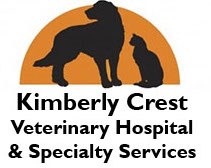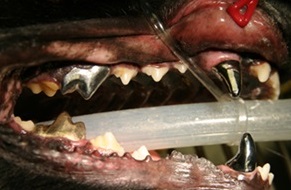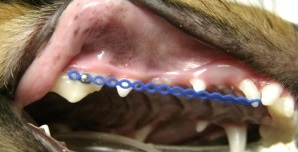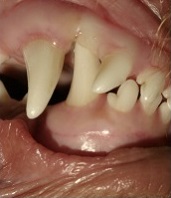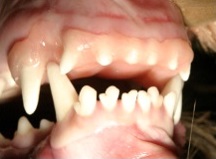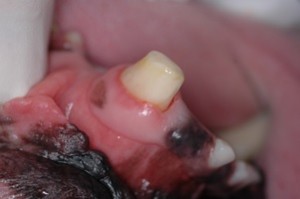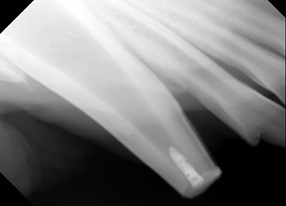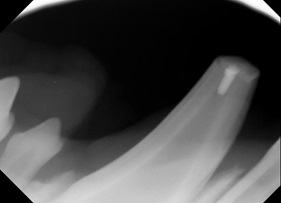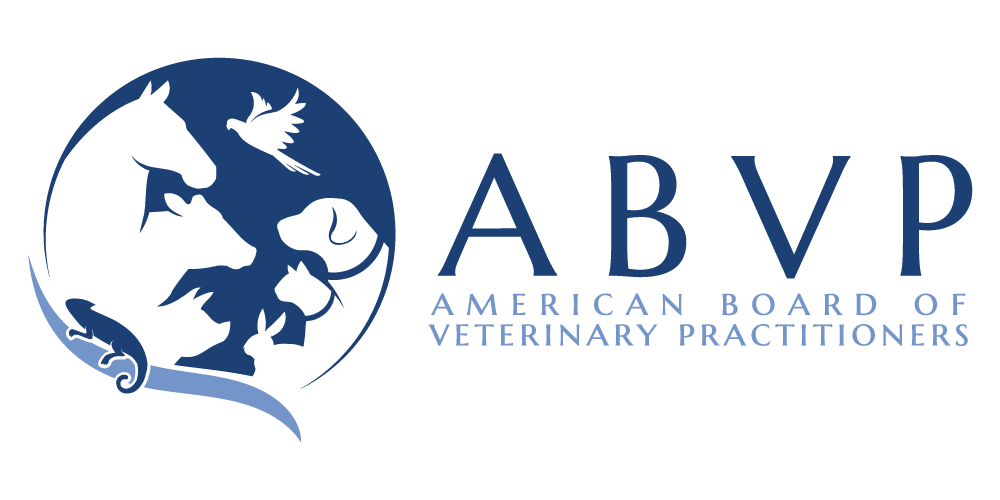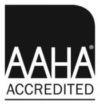Oral Health Evaluation
Once your pet has been intubated and put under gas anesthesia, we start taking full mouth radiographs, just like at your dentist’s office. Each radiograph is evaluated by the veterinarian to check for any hidden problems. Then each tooth is checked for mobility and gingival pockets around the tooth due to gingival disease. If there are any teeth that need to be extracted, the veterinarian would extract them at this time. The teeth then are ultrasonically cleaned by a certified veterinary technician with our scaler to remove the calculus and tartar that has accumulated. The technician also cleans underneath the gum line (subgingival) because many times there is hidden tartar.
After the teeth are sparkling clean, Fluoride is spread over them to slow the reattachment of plaque to the teeth. OraVet is then applied to each tooth. OraVet is a waxy-like barrier sealant that helps seal the gum line after cleaning to help prevent the buildup of tartar. If there are any extractions needed, we will send you home with medication to help with pain afterwards; we may also send home antibiotics if the gingival disease is significant.
Below are before and after pictures showing excessive tartar and hair built up, resulting in multiple extractions.
 Before Oral Health Evaluation |
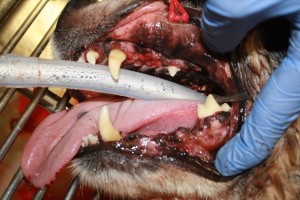 After Oral Health Evaluation (with extractions) |
